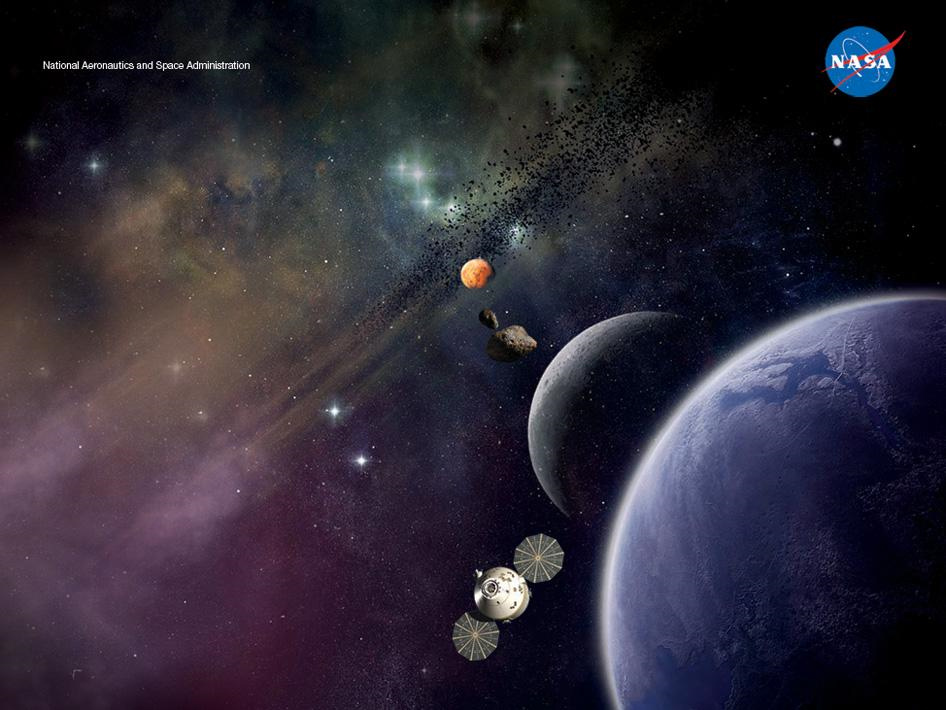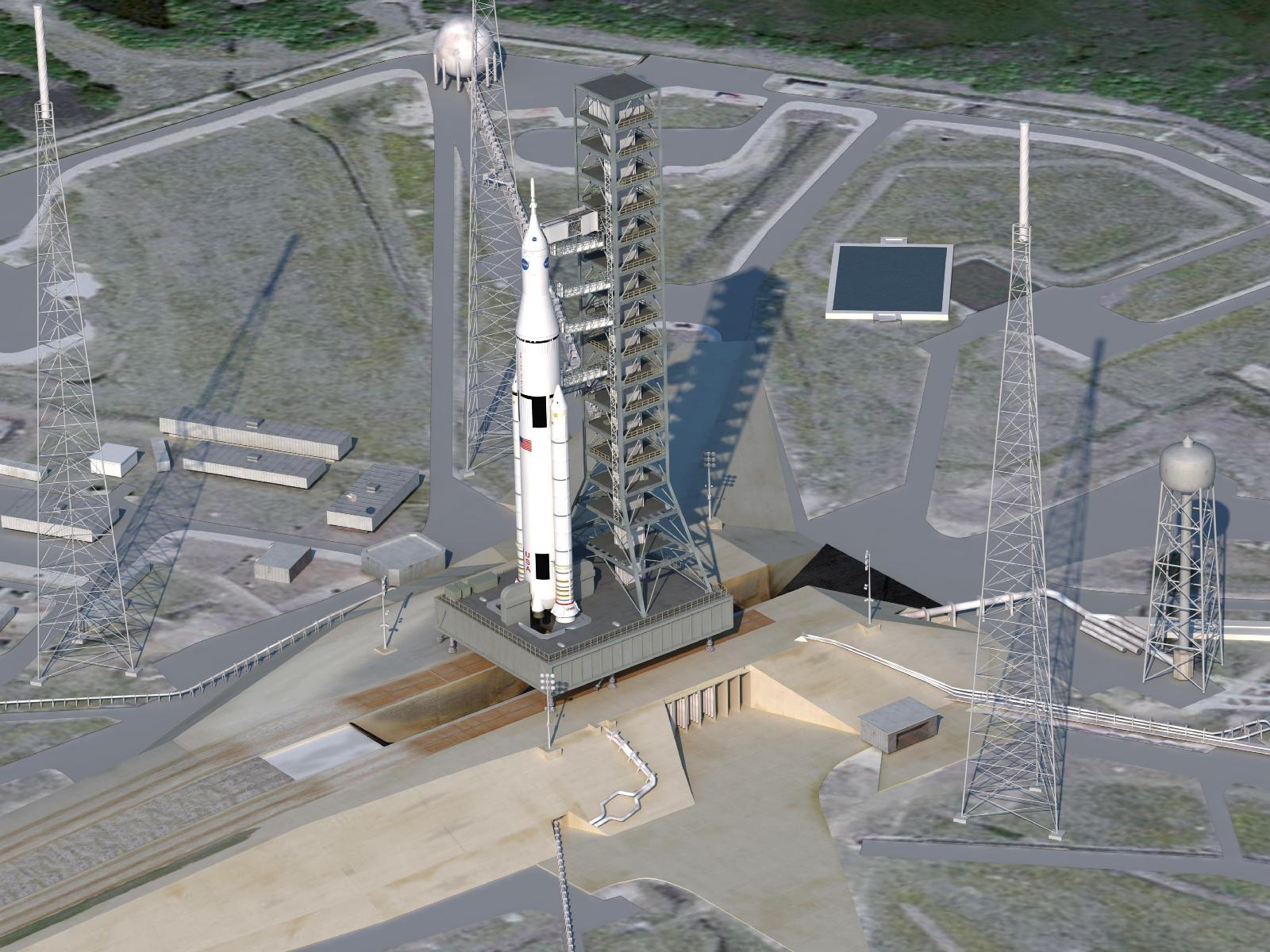Can NASA Afford Its Huge New Deep Space Rocket?

NASA announced its choice for a new rocket design that would take humans beyond low-Earth orbit to an asteroid and Mars Wednesday (Sept. 14), but now the big question looms: Can NASA actually afford it?
The new rocket, called the Space Launch System (SLS), is a heavy-lift booster with enough power for NASA's new goal of sending astronauts to an asteroid by 2025 and on to Mars in the 2030s, goals set by President Barack Obama, agency officials said. The booster is designed to launch NASA's new crew-carrying Multi-Purpose Crew Vehicle (MPCV). [Photos: NASA's New Rocket for Deep Space Flights]
But NASA, like all government programs, has also been feeling the pinch of a downtrodden economy, with its budget frozen this year at 2010 levels. The space agency is also trying to make the difficult transition from the space shuttle program, which ended this summer after 30 years of spaceflight, to its new deep space exploration plan.
By NASA estimates, the SLS and MPCV capsule and their associated ground operations will cost about $3 billion a year over the next six years. That gives the program an initial total of $18 billion through 2017, when the first test flight is expected to launch.
For comparison, NASA spent about $9 billion over the six years between 2004 and 2010 on its previous moon-oriented Constellation program, which Obama canceled in 2010 in favor of the asteroid-focused plan.

NASA officials maintain that the $18 billion price tag for SLS is doable.
"This gives us a very flexible system that we think will be affordable in the future and fully meets our exploration needs," Bill Gerstenmaier, NASA'sassociate administrator for human exploration and operations, told reporters during a teleconference today. "This is a tremendous step forward and really puts us in a position to move forward for exploration."
Get the Space.com Newsletter
Breaking space news, the latest updates on rocket launches, skywatching events and more!
Cutting costs
Indeed, many of the design specifics for the new rocket were chosen with cost in mind.
For example, the booster utilizes space shuttle main engines and other hardware from previous programs. The design is also flexible, to allow the booster to cut costs for missions that don't require its full thrust capability, officials said. [Related: How NASA's New Giant Space Rocket Will Work]
"This specific architecture was selected largely because it utilizes an evolvable development approach, which allows NASA to address high-cost development activities early on in the program and take advantage of higher buying power before inflation erodes the available funding of a fixed budget," NASA officials wrote in a statement.
NASA officials said the money for the new rocket would come out of the agency's existing budget, which has been somewhat freed up following the retirement of the space shuttles. No major addition to its current and forecasted funding levels would be necessary, they maintain.
"This is accommodated in our current NASA budget," Gerstenmaier said. "If we don't get exactly the annual budget we've anticipated, we have enough flexibility we can accommodate. I'd say we have a pretty agile or flexible ability to go keep costs under control as we move forward."
However, keeping the costs fixed at about $3 billion dollars a year for the forseeable future may not be the most efficient way to develop the rocket, said Scott Pace, director of the Space Policy Institute at George Washington University in Washington.
"In a development program you ramp up money in the near term, to buy facilities and equipment, then it ramps down," Pace told SPACE.com. "Development doesn't tend to go steady year to year. If you force the peak funding down artificially then the program stretches out. It's like a water balloon — if you squeeze one end, its going to come out the other."
Budget controversy
NASA has been criticized before for taking too long to finalize its SLS design. And earlier this week, U.S. Sens. Kay Bailey Hutchison (R-Texas) and Bill Nelson (D-Fla.) accused the Obama administration of trying to sabotage the SLS program by inflating its cost estimates in a leaked document published by the Wall Street Journal.
That estimate put the price for the SLS and MPCV program at nearly $63 billion through 2025.
But both Hutchison and Nelson were on hand today to unveil the SLS design, as well as its lower cost estimates, with NASA administrator Charles Bolden during a press conference at the Senate Dirksen Building in Washington.
"I have felt there was some effort underneath somewhere to delay, delay, delay until it was too expensive," Hutchison said today. "It came to a head when there was a leak that issued a hypothetical set of circumstances which would double the cost of this Space Launch System. Nothing in there was factual. I think that now the administration has come forward, everyone is on the same page on the numbers."
Nelson also strongly endorsed the new plan and its budget feasibility, despite the tough fiscal times.
"Will it be tough times going forward?" Nelson said. "Of course it is. We are in an era in which we have to do more with less, all across the board. And the competition for the available dollars will be fierce. But what we have here now are the realistic costs that have been scrubbed by an outside third party."
Political supporters of the rocket say the SLS program is worth the investment, even with the government's budget deficit.
"I know that some of the tussles up here on the hill can be challenging, but this is rocket science we are dealing with," U.S. State Representative Chaka Fattah (D-Pa.) said today. "We do want to make sure that our country leads the world. We intend for America to be No. 1, and we know as appropriators that we can't do that on the cheap. It will cost money."
You can follow SPACE.com senior writer Clara Moskowitz on Twitter @ClaraMoskowitz. Follow SPACE.com for the latest in space science and exploration news on Twitter @Spacedotcom and on Facebook.
Join our Space Forums to keep talking space on the latest missions, night sky and more! And if you have a news tip, correction or comment, let us know at: community@space.com.

Clara Moskowitz is a science and space writer who joined the Space.com team in 2008 and served as Assistant Managing Editor from 2011 to 2013. Clara has a bachelor's degree in astronomy and physics from Wesleyan University, and a graduate certificate in science writing from the University of California, Santa Cruz. She covers everything from astronomy to human spaceflight and once aced a NASTAR suborbital spaceflight training program for space missions. Clara is currently Associate Editor of Scientific American. To see her latest project is, follow Clara on Twitter.









